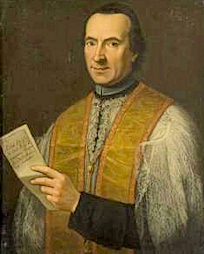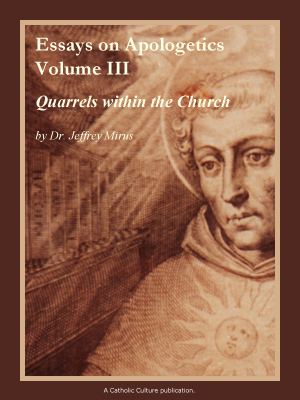Easter: May 23rd
Monday of the Sixth Week of Easter
Other Commemorations: St. John Baptist de Rossi, Priest (RM)
» Enjoy our Liturgical Seasons series of e-books!
Entrance Antiphon, Rom 6:9:
Christ, having risen from the dead, dies now no more; death will no longer have dominion over him, alleluia.
The Roman Martyrology commemorates St. John Baptist de Rossi who was from Genoa, and studied and worked in Rome before becoming a priest there and a canon of Santa Maria in Cosmedin. He worked tirelessly for homeless women, the sick, prisoners and workers, and was a very popular confessor, being called a second Philip Neri.
Today marks the beginning of the Minor Rogation Days, which fall Monday through Wednesday preceding Ascension Thursday.
Rogation Days
Monday, Tuesday and Wednesday of this week we commemorate the traditional dates for the Minor Rogation Days. These are days of prayer and formerly fasting, which take place every year on April 25th and the three days preceding the feast of the Ascension, the former being known as the Major Rogation and the latter as the Minor Rogations. The word “rogation” has its origins in the Latin word rogare, which means to supplicate or ask, and the purpose of Rogation Days is to beg God for His mercy, to turn away His anger, and to ask Him to bless the fruits of the earth while protecting us from natural disasters. The Rogation Days no longer appear on the General Roman Calendar, but celebrated according to the local conference of bishops.
Things to Do:
- Rogation Days: Cross Days (Activity)
- Rogation Day Prayers (Prayer)
- Read more about the Rogation Days at Catholic Saints Info.
- For more see Rogation Days.
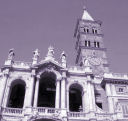
Monday of the Sixth Week of Easter, Monday of the Lesser Rogation Days
Station with Santa Maria Maggiore (St. Mary Major):
Following the disasters that afflicted the diocese of Vienne in Daughphiny in the fifth century, St. Mamertus instituted a solemn penitential procession on three days preceding Ascension Day. In 511 the Council of Orleans ordered it for the rest of France. It soon spread to the whole Church. The Rogation Days, though they remain an occasion for imploring God's blessing on the whole life of the Church, have in our days become a time of prayer for Him to bless the year's harvest. The singing of the Litany of the Saints has given its name to these three days of public intercession, but as at Rome there was already a similar procession on April 25, the Rogation Days came to be called the Lesser Litanies. The bishop may appoint another date for the Rogation Days, if it better meets local needs or customs.
For further information on the Station Churches, see The Stational Church.
Churches of Rome Info: Basilica of Santa Maria Maggiore
Rome Art Lover: Basilica Santa Maria Maggiore
St. John Baptist de Rossi
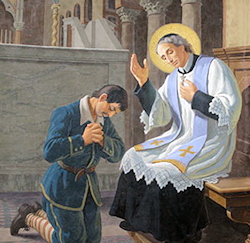
After three years he was called to Rome by a relative, Lorenzo de Rossi, who was canon at St. Mary in Cosmedin. He pursued his studies at the Collegium Romanum under the direction of the Jesuits, and soon became a model by his talents, application to study, and virtue. As a member of the Sodality of the Blessed Virgin and of the Ristretto of the Twelve Apostles established at the college, he led the members in the meetings and pious exercises, in visits to the sick in the hospitals and in other works of mercy, and merited even then the name of apostle.
At the age of sixteen he entered the clerical state. Owing to indiscreet practices of mortification he contracted spells of epilepsy, notwithstanding which he made his course of scholastic philosophy and theology, in the college of the Dominicans, and, with dispensation, was ordained priest on 8 March, 1721. Having reached the desired goal, he bound himself by vow to accept no ecclesiastical benefice unless commanded by obedience. He fulfilled the duties of the sacred ministry by devoting himself to the laborers, herds, and teamsters of the Campagna, preaching to them early in the morning, or late in the evening, at the old Forum Romanum (Campo Vaccino), and by visiting, instructing, and assisting the poor at the hospital of St. Galla. In 1731 he established near St. Galla another hospital as a home of refuge for the unfortunates who wander the city by night ("Rom. Brev.", tr. Bute, Summer, 573).
In 1735 he became titular canon at St. Mary in Cosmedin, and, on the death of Lorenzo two years later, obedience forced him to accept the canonry. The house belonging to it, however, he would not use, but employed the rent for good purposes.
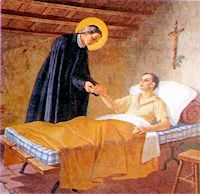 For a number of years John was afraid, on account of his sickness, to enter the confessional, and it was his custom to send to other priests the sinners whom he had brought to repentance by his instructions and sermons. In 1738 a dangerous sickness befell him, and to regain his health he went to Cività Castellana, a day's journey from Rome. The bishop of the place induced him to hear confessions, and after reviewing his moral theology he received the unusual faculty of hearing confessions in any of the churches of Rome. He showed extraordinary zeal in the exercise of this privilege and spent many hours every day in hearing the confessions of the illiterate and the poor whom he sought in the hospitals and in their homes. He preached to such five and six times a day in churches, chapels, convents, hospitals, barracks, and prison cells, so that he became the apostle of the abandoned, a second Philip Neri, a hunter of souls.
For a number of years John was afraid, on account of his sickness, to enter the confessional, and it was his custom to send to other priests the sinners whom he had brought to repentance by his instructions and sermons. In 1738 a dangerous sickness befell him, and to regain his health he went to Cività Castellana, a day's journey from Rome. The bishop of the place induced him to hear confessions, and after reviewing his moral theology he received the unusual faculty of hearing confessions in any of the churches of Rome. He showed extraordinary zeal in the exercise of this privilege and spent many hours every day in hearing the confessions of the illiterate and the poor whom he sought in the hospitals and in their homes. He preached to such five and six times a day in churches, chapels, convents, hospitals, barracks, and prison cells, so that he became the apostle of the abandoned, a second Philip Neri, a hunter of souls.
In 1763, worn out by such labors and continued ill-health, his strength began to ebb away, and after several attacks of paralysis he died at his quarters in Trinità de' Pellegrini. He was buried in that church under a marble slab at the altar of the Blessed Virgin. God honoured his servant by miracles, and only seventeen years after his death the process of beatification was begun, but the troubled state of Europe during the succeeding years prevented progress in the cause until it was resumed by Pius IX, who on 13 May, 1860, solemnly pronounced his beatification. As new signs still distinguished him, Leo XIII, on 8 December, 1881, enrolled him among the saints.
—Excerpted from The Catholic Encyclopedia
Patronage: of the abandoned
Highlights and Things to Do:
- Read the life of St. John Baptist de Rossi free at Google Books
- Read more about St. John Baptist de Rossi:
- His relics are located in Rome at the Church of San Giovanni Battista de Rossi.


